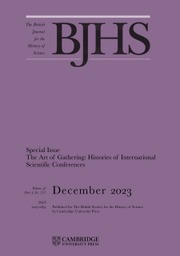Melissa Reynolds’s Reading Practice is a remarkable achievement, notable for outstanding scholarship and elegant, engaging prose. It is concerned with what she calls the ‘practical text’, a term she describes and identifies here. The book traces how such practical texts emerged in manuscript in the fourteenth and fifteenth centuries, and then how they transitioned into print in the sixteenth. In both media, the practical text was an important conduit for natural knowledge before the emergence of the New Science. A ‘practical manuscript’, in her estimation, is vernacular rather than in scholarly Latin, it is a collection of disparate material rather than a through-written treatise, and the knowledge it contains is utilitarian and practical rather than theoretical and abstract. It concerns recipes for medicines, cures and comestibles; advice about cultivating crops; prognostications for forecasting the weather or other events; and accounts of secrets and tricks. What holds these disparate materials together is their practical and utilitarian concerns: they are instructions or recipes about how to do something or to bring about a specific effect. Reynolds shows that the contents of these manuscripts were collected and assembled on an accretive basis, by ordinary or non-elite people, both women and men (though mostly women). Over ten years of research, Reynolds identified 182 practical manuscripts written in English, and 475 editions of printed practical books published in England between 1475 and 1600. She shows how these apparently disparate knowledge practices, one manuscript-based, and the other in print culture, are in fact one ‘textual tradition’.
One of the book’s most impressive contributions lies in its deft handling of both fine-grained textual analysis and large-scale cultural synthesis. Reynolds shows how practical texts offered a way for premodern English people to interpret and navigate their embodied lives, their health and their interactions with the natural world. These instructional texts were sometimes original and innovative, but more often they were translations or imitations of classical learning, or translations from other languages. As Reynolds shows, these practical texts exist in a kind of dialogue with medical traditions, and forms of natural history, that stretched back to antiquity. The practical texts of fifteenth-century England offered a way to access natural knowledge. Practical texts peddled old knowledge, especially advice that could be extracted and rearranged, creating new miscellanies out of old material. Practical texts thus occupied a space adjacent to – but distinct from – the emerging experimental method of figures like Bacon. Reynolds’s sensitivity to the ways old knowledge was continually reworked for new audiences adds real richness to her account.
One of the signal achievements of the book is how it relates the history of these texts through intricately observed examples. In Chapter 1, we follow Peter Cantele, vicar of Toft Monks in Norfolk, through his acquisition of a practical book of medical recipes, written by a professional scribe in London. Reynolds relates the history of this volume (now British Library Sloane MS 1764) as way to explore the material and book history of such volumes, describing the contest between parchment and paper and the scribal industry around St Paul’s, as well as guiding us through how such collections of recipes and instructions were compiled. Chapters 1 to 3 follow a similar path as they explore the world of the practical manuscript: such as the shift from professional scribes to owner–writers, or the rise of visual prognostics in ‘lewde-calendars’. Reynolds’s book is a remarkable research achievement. She carefully analyses texts to show how the same material was adapted and reused across different titles, even when they claim to be new and novel.
Reynolds pursues the practical manuscript into print in Chapters 4 and 5, and then explores its use for knowledge of women’s bodies and medicines in the final two chapters. She shows how early printers speculated that practical publications would find a ready public, making vernacular natural knowledge more widely known. She notes that some of the earliest books printed in England, beginning with Machlinia’s plague tract Litill boke … agenst the pestilence in 1485, were ‘practical books’. Such books became a staple of the English printers, including Wyncken de Worde and Caxton. Reynolds notes that all of these books were adaptations of texts that had previously circulated in manuscript in the fifteenth century: the new medium of moveable type and the handpress simply allowed for more copies to be produced. While producing printed books represented an enormous sunk cost (paper, typesets, woodcuts, ink, printing, binding), after the set-up was completed, it was comparatively easy to produce what seemed like an enormous number of copies, as many as five hundred of each title. Practical and economic factors meant that these were mostly twelve-page pamphlets, that could be retailed relatively cheaply or collected together and bound uniform in more luxe editions. A new innovation was the title page, giving each title its own identity. These texts reused knowledge from manuscript texts that were themselves compilations of reused knowledge, even though they often presented it as new, newly arranged, or augmented.
Reynold’s study is beautifully written, both enormously learned and beguiling in detail. It is noticeable how readable it is, developing clear narrative and compelling stories from the material, which is certainly not a feature of all book history. One area where readers might wish for more is in the book’s engagement with the complexities of reading itself, a topic suggested by its title. While Reynolds carefully reconstructs how practical texts were compiled and circulated, the subjective experience of reading – the moments of acceptance, scepticism, rejection or irony – receives less sustained attention. Reading, like recipe writing, can be a practical process, but it can also involve complicated emotional, intellectual and even critical responses that are harder to reconstruct.
Nonetheless, this is a minor reservation. Reading Practice is rigorously researched, conceptually innovative and beautifully written. It will become essential reading for historians of knowledge, book historians and all those interested in the transmission of scientific and practical understanding across the manuscript and print divide.



